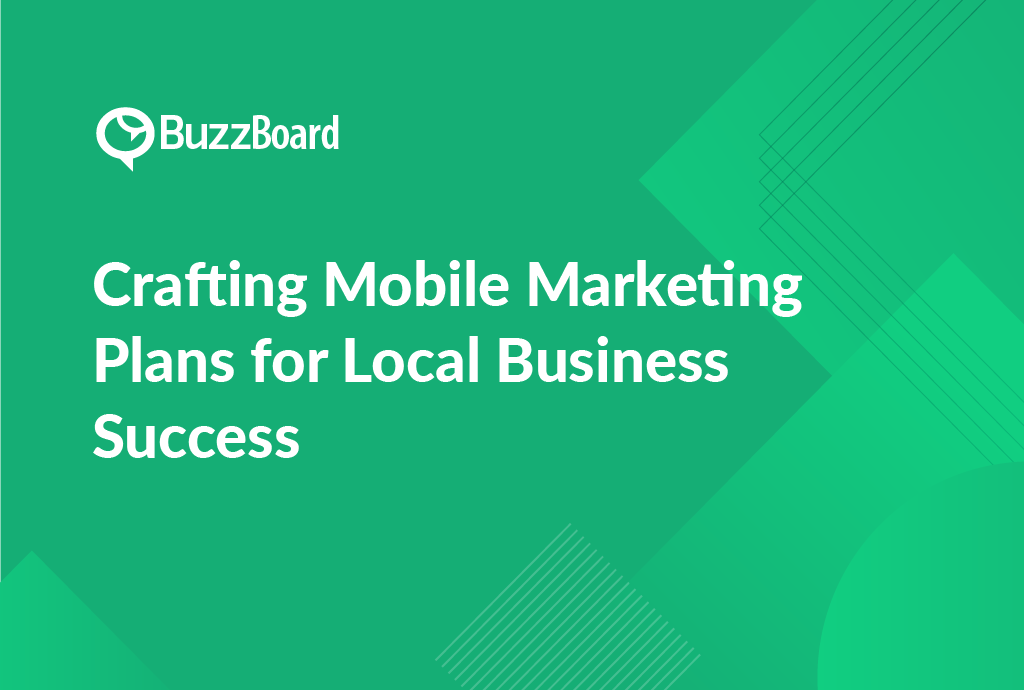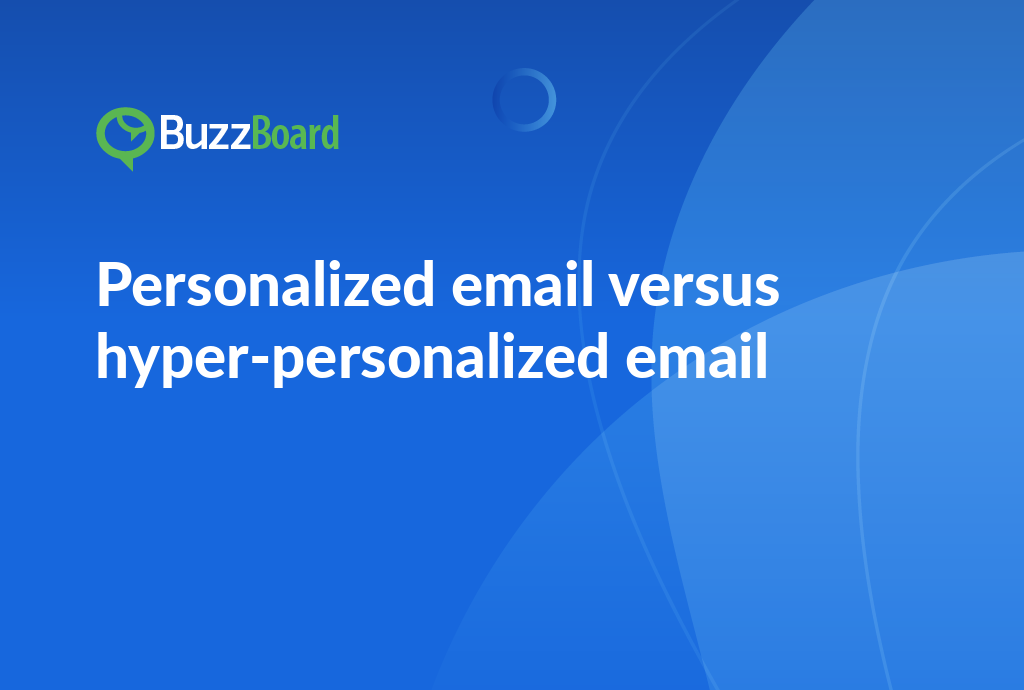Geo-Targeting in your Mobile Marketing Campaigns
Geo-targeting is a powerful tool in mobile marketing campaigns that allows marketers to target specific geographic locations with personalized messages, offers, and content. By leveraging the user’s location, marketers can create highly targeted and relevant campaigns that drive engagement, conversions, and ultimately, revenue.
Here are some ways to use geo-targeting in mobile marketing campaigns:
-
Location-based offers: Use geo-targeting to deliver location-based offers to customers who are near your store, restaurant, or other physical location. For example, a coffee shop could offer a discount to customers who are within a 1-mile radius of their location.
-
Targeted messaging: Use geo-targeting to deliver targeted messages to customers based on their location. For example, a travel company could send a message to customers who are in a specific city, promoting a local attraction or event.
-
Proximity marketing: Use geo-targeting to deliver messages to customers who are near a specific location. For example, a retailer could send a message to customers who are near their store, promoting a sale or new product.
-
Event-based targeting: Use geo-targeting to target customers based on specific events or activities. For example, a sports team could send a message to fans who are attending a game, promoting a special offer or discount.
-
Weather-based targeting: Use geo-targeting to target customers based on weather conditions. For example, a retailer could send a message to customers who are in an area with heavy rain, promoting a raincoat or umbrella.
-
Time-based targeting: Use geo-targeting to target customers based on specific times of day or week. For example, a coffee shop could send a message to customers who are near their location during morning rush hour, promoting a breakfast special.
-
Behavioral targeting: Use geo-targeting to target customers based on their behavior. For example, a retailer could target customers who have visited their store multiple times, promoting a loyalty program or special offer.
-
Contextual targeting: Use geo-targeting to target customers based on their context. For example, a retailer could target customers who are near a competitor’s store, promoting a special offer or discount.
-
Location-based segmentation: Use geo-targeting to segment customers based on their location. For example, a retailer could segment customers based on their location, and send targeted messages and offers to customers in specific areas.
-
Integration with other targeting options: Use geo-targeting in combination with other targeting options, such as demographics, interests, and behaviors, to create highly targeted and personalized campaigns.
Benefits of Geo-Targeting:
-
Increased relevance: Geo-targeting allows marketers to deliver highly relevant messages and offers to customers, increasing the likelihood of engagement and conversion.
-
Improved targeting: Geo-targeting allows marketers to target specific geographic locations, increasing the accuracy of their targeting and reducing waste.
-
Increased conversions: Geo-targeting can drive conversions by delivering targeted messages and offers to customers who are near a physical location.
-
Better customer experience: Geo-targeting can improve the customer experience by delivering personalized and relevant messages and offers to customers.
-
Increased brand awareness: Geo-targeting can increase brand awareness by delivering targeted messages and offers to customers who are near a physical location.
-
Increased customer loyalty: Geo-targeting can increase customer loyalty by delivering targeted messages and offers to customers who are near a physical location.
-
Increased revenue: Geo-targeting can increase revenue by driving conversions and sales.
-
Better data collection: Geo-targeting can provide valuable insights into customer behavior and preferences, allowing marketers to refine their targeting and improve their campaigns.
-
Increased engagement: Geo-targeting can increase engagement by delivering targeted messages and offers to customers who are near a physical location.
-
Increased ROI: Geo-targeting can increase ROI by driving conversions and sales, and providing valuable insights into customer behavior and preferences.
Best Practices for Geo-Targeting:
-
Use precise targeting: Use precise targeting to ensure that your messages and offers are delivered to the right customers, at the right time.
-
Use multiple targeting options: Use multiple targeting options, such as demographics, interests, and behaviors, to create highly targeted and personalized campaigns.
-
Use location-based segmentation: Use location-based segmentation to segment customers based on their location, and send targeted messages and offers to customers in specific areas.
-
Use contextual targeting: Use contextual targeting to target customers based on their context, such as weather or time of day.
-
Use behavioral targeting: Use behavioral targeting to target customers based on their behavior, such as purchase history or browsing behavior.
-
Use A/B testing: Use A/B testing to test different targeting options and messaging strategies, and optimize your campaigns for better performance.
-
Use location-based analytics: Use location-based analytics to track the performance of your geo-targeting campaigns, and refine your targeting and messaging strategies.
-
Use customer feedback: Use customer feedback to refine your targeting and messaging strategies, and improve the customer experience.
-
Use location-based segmentation: Use location-based segmentation to segment customers based on their location, and send targeted messages and offers to customers in specific areas.
-
Use contextual targeting: Use contextual targeting to target customers based on their context, such as weather or time of day.
Geo-targeting is a powerful tool in mobile marketing campaigns that allows marketers to target specific geographic locations with personalized messages, offers, and content. By leveraging the user’s location, marketers can create highly targeted and relevant campaigns that drive engagement, conversions, and ultimately, revenue.
Increasingly, consumers access social media platforms through apps on their mobile phone, indicating that mobile marketing campaigns should include social media.
Exploring the Concept of Geo-Targeted Social Media Campaigns
Geo-targeted social media campaigns have revolutionized the digital marketing sphere, offering a powerful tool for agencies. This strategy enables agencies to tailor social media campaigns to specific geographic locations, delivering more effective local audience engagement.
Geo-targeted social media campaigns, by definition, are promotional strategies customized to specific locations or regions. They diverge from regular social media campaigns by zeroing in on a particular geographical area, boosting local audience reach. This approach targets potential customers who are more inclined to interact with the products or services marketed by digital agencies.
Incorporating geo-targeted social media campaigns into agency social media strategies could be a game changer. As every region boasts unique demographics and customer behaviors, these campaigns can present more relevant, personalized content. Consequently, the rates of engagement, conversion, and customer retention are typically higher.
One potent aspect of these campaigns is the ability to gather rich insights. As the campaigns focus on specific locations, digital agencies can delve into data obtained from social media campaign engagement, identify patterns, and analyze user behavior in these designated areas. This valuable information can help refine strategies and enhance future campaigns.
Armed with this knowledge, new paths for growth and customer engagement are now available. Remember, knowledge is power and, in this context, the key to effective social media targeting. With this information at your disposal, it’s time to tap into geographic targeting and elevate your social media strategy.
The Importance of Geo-Targeting in Social Media Strategies for Digital Agencies
Geo-targeted social media campaigns have become an indispensable component of digital agency strategies, particularly in today’s era of widespread smartphone adoption and social media usage. The significance of geo-targeting for digital agencies cannot be overstated, as it enables them to precisely connect with a local audience, thereby enhancing engagement and improving campaign-related outcomes.
By incorporating geo-targeting into social media campaigns, digital agencies can provide personalized content and advertisements to users based on their geographical location. This approach ensures that users receive relevant content, thereby increasing the probability of engagement and conversion. For instance, a digital agency running social media campaigns for a local restaurant chain can utilize geo-targeting to display ads to users within a specific radius of the restaurant locations. This targeted approach allows the agency to reach potential customers who are likely to visit the restaurant, increasing the chances of conversion.
Moreover, geo-targeting can offer valuable insights into social media campaigns, enabling the agency to evaluate a campaign’s performance across various regions. This information can be used to refine the strategy, identify areas of improvement, and maximize the client’s return on investment. By analyzing the performance of geo-targeted campaigns, agencies can gain a deeper understanding of their target audience’s preferences, behaviors, and demographics, allowing them to tailor their marketing efforts more effectively.
In addition to its benefits in terms of campaign performance, geo-targeting plays a crucial role in enhancing local audience reach. It allows agencies to target users not only based on their geographical location but also their online behavior, interests, preferences, and demographic factors. This multi-faceted approach enables agencies to create highly targeted campaigns that resonate with their audience, increasing the likelihood of engagement and conversion.
Furthermore, geo-targeting can be used in conjunction with other social media targeting options, such as interest-based targeting, behavior-based targeting, and lookalike targeting. By combining these targeting options, agencies can create highly targeted campaigns that reach users who are most likely to be interested in their products or services. For example, a digital agency running social media campaigns for a fashion brand can use geo-targeting to target users in specific cities or regions, and then use interest-based targeting to target users who have shown an interest in fashion or related topics.
Infusing geo-targeting into social media strategies results in more effective and successful social media campaigns for digital agencies. By harnessing this approach, agencies can boost their reach and engagement, leading to a greater return on social media marketing investments. As the use of smartphones and social media continues to grow, the importance of geo-targeting in social media campaigns will only continue to increase, making it an essential component of any digital agency’s social media strategy.
Some of the key benefits of geo-targeting in social media campaigns include:
- Increased relevance: Geo-targeting allows agencies to provide users with content and advertisements that are relevant to their location, increasing the likelihood of engagement and conversion.
- Improved targeting: By targeting users based on their geographical location, agencies can create highly targeted campaigns that reach users who are most likely to be interested in their products or services.
- Enhanced campaign performance: Geo-targeting can offer valuable insights into social media campaigns, enabling agencies to evaluate a campaign’s performance across various regions and refine their strategy accordingly.
- Increased return on investment: By targeting users who are most likely to be interested in their products or services, agencies can increase the likelihood of conversion and maximize their return on investment.
- Better understanding of target audience: Geo-targeting can provide agencies with valuable insights into their target audience’s preferences, behaviors, and demographics, allowing them to tailor their marketing efforts more effectively.
To get the most out of geo-targeting in social media campaigns, agencies should consider the following best practices:
- Use precise location targeting: Instead of targeting users based on a broad geographic area, use precise location targeting to reach users who are within a specific radius of your business or location.
- Use multiple targeting options: Combine geo-targeting with other targeting options, such as interest-based targeting, behavior-based targeting, and lookalike targeting, to create highly targeted campaigns.
- Monitor and optimize: Continuously monitor the performance of geo-targeted campaigns and optimize them accordingly to ensure maximum ROI.
- Use location-based content: Use location-based content, such as location-specific promotions or offers, to make your campaigns more relevant and engaging to users.
- Use social media analytics: Use social media analytics tools to track the performance of geo-targeted campaigns and gain insights into user behavior and preferences.
A Detailed Guide on Setting up Geo-Targeted Mobile Marketing Campaigns for Local Audience Reach
Geo-targeted mobile marketing campaigns have become a crucial component of digital agencies’ strategies. As the importance of mobile devices continues to grow, these organizations are investing significant time and resources into refining their mobile marketing approaches to maximize their local reach and tap into new demographics. By doing so, they can bolster their overall performance, drive more conversions, and ultimately, achieve greater success.
To initiate a successful geo-targeted mobile marketing campaign, the first step is to identify the right social media platforms based on analytics and campaign insights. This step is critical in determining the direction of the campaign and identifying the most effective platforms for reaching the target audience. By analyzing the data, digital agencies can determine which platforms, such as Facebook, Instagram, or LinkedIn, are most prevalent among their target demographic. This information will inform the direction of the campaign and ensure that the messaging is tailored to the specific audience.
The next step involves understanding the local audience’s preferences and expectations from your brand. This understanding is essential in shaping engaging messages that will resonate with the target audience. By conducting thorough research and gathering insights on the local audience’s behaviors, preferences, and pain points, digital agencies can create messaging that is relevant, personalized, and effective. This approach will help to build trust and credibility with the audience, ultimately driving more conversions and sales.
Adopting a tailored approach to geo-targeting is also crucial in ensuring the success of the campaign. By segmenting the customer base and catering to their individual needs, digital agencies can enhance engagement and conversion rates. This approach involves creating targeted messages and offers that are specific to each segment, increasing the likelihood of resonating with the audience. Additionally, by tracking performance analytics and making real-time adjustments to the campaign, digital agencies can optimize their strategy and maximize their return on investment (ROI).
For salespeople at digital marketing agencies selling to small and local businesses, identifying and optimizing opportunities within their campaigns is vital. By working with geo-targeted campaigns, these businesses can fully harness the power of mobile marketing to drive growth and achieve their goals. By understanding the importance of geo-targeting and the benefits it can bring, salespeople can effectively communicate the value of these campaigns to their clients and help them achieve greater success.
In conclusion, geo-targeted mobile marketing campaigns are a crucial component of digital agencies’ strategies, offering a powerful way to reach new demographics, enhance local reach, and drive conversions. By identifying the right social media platforms, understanding the local audience’s preferences, adopting a tailored approach to geo-targeting, and tracking performance analytics, digital agencies can create successful campaigns that drive results. For salespeople at digital marketing agencies, understanding the importance of geo-targeting and the benefits it can bring is essential in helping their clients achieve greater success and maximize their ROI.
Showcasing the Impact of Geo-Targeted Social Media Campaigns
Digital agencies are increasingly leveraging geo-targeted social media campaigns to refine their marketing strategies and achieve greater success. By concentrating their efforts on a local audience, agencies can enhance potential engagement and conversion rates, ultimately driving more tangible results for their clients.
Geo-targeting allows digital agencies to strengthen their connections with consumers in a specific geographic location, enabling the customization of messages, services, and user experiences to fit the regional tastes and preferences of the targeted group. This targeted approach refines the relevancy and potency of campaigns, increasing the likelihood of resonating with the intended audience.
A compelling example of the effectiveness of geo-targeted social media campaigns is illustrated by a prominent digital agency that orchestrated a campaign for a local enterprise. By utilizing social media targeting, they remarkably increased awareness and engagement within a defined area, achieving a staggering 65% surge in engagement compared to their prior nationwide campaign. This success highlights the potential for geo-targeting to drive meaningful results and demonstrate the value of this strategy to clients.
The intelligence gleaned from conducting geo-targeted campaigns is profound, providing valuable insights into local target audiences. By analyzing the behaviors, preferences, and messaging that resonates with them the most, agencies can inform their marketing strategies and develop more effective campaigns that speak directly to the needs and interests of their local customers.
For salespeople in digital marketing agencies selling to small and local businesses, incorporating geo-targeted social media campaigns into your offerings can revolutionize your approach. By providing clients with a powerful, tailor-made tactic to better reach and engage their local customers, you can differentiate your agency and establish a competitive edge in the market. This targeted approach can also help you build stronger relationships with clients, as you work together to develop campaigns that are specifically designed to meet their unique needs and goals.
Moreover, geo-targeted social media campaigns can also help agencies to:
- Increase brand awareness and recognition among local audiences
- Drive foot traffic to physical locations or events
- Boost sales and conversions by targeting customers who are more likely to make a purchase
- Enhance customer loyalty and retention by providing personalized experiences
- Gather valuable insights and data on local target audiences, informing future marketing strategies
By incorporating geo-targeted social media campaigns into your agency’s offerings, you can help your clients achieve greater success and establish a strong online presence in their local markets.
Decoding Insights from Successful Geo-Targeted Social Media Campaigns and the Benefits to Digital Agencies
Geo-targeted social media campaigns have emerged as a potent tool for digital agencies seeking to deliver exceptional results for their clients. While many agencies leverage social media platforms for marketing and brand building, those that adopt a strategic geo-targeting approach can unlock valuable insights that enable them to offer superior services to clients targeting local audiences.
Geo-targeting involves customizing social media advertisements or content to entice specific geographic locations, allowing agencies to accurately target audiences based on their location. This approach fosters more personalized interactions and direct engagement with potential customers, leading to a significant boost in local audience reach and improved performance for businesses in those areas.
The analysis of data from geo-targeted social media campaigns provides precious insights into consumer behavior, patterns, and preferences, enabling agencies to create tailored social media strategies that resonate with their target audience. This data-driven approach also aids in identifying growth markets, evaluating promotional strategies, and clarifying key performance indicators, contributing to the creation of more effective social media campaigns.
Moreover, geo-targeted social media campaigns enable agencies to provide unique, industry-specific solutions for their clients. By leveraging location-based data, agencies can develop targeted campaigns that cater to the specific needs and preferences of local audiences, setting them apart from competitors and establishing a strong reputation in the market.
In addition, geo-targeted social media campaigns can help agencies to:
- Increase brand awareness and visibility among local audiences
- Drive foot traffic to physical stores or locations
- Boost online engagement and conversions
- Enhance customer loyalty and retention
- Monitor and measure the effectiveness of campaigns in real-time
By incorporating geo-targeted social media campaigns into their arsenal, agencies can gain a competitive edge in the market, deliver exceptional results for their clients, and establish themselves as thought leaders in the industry.
So, is your agency tapping into the power of geo-targeted social media campaigns? If not, perhaps it’s time to reassess your social media strategy and harness the advantages of geo-targeted advertising. By doing so, you can unlock new opportunities for growth, improve your agency’s reputation, and deliver unparalleled results for your clients.










